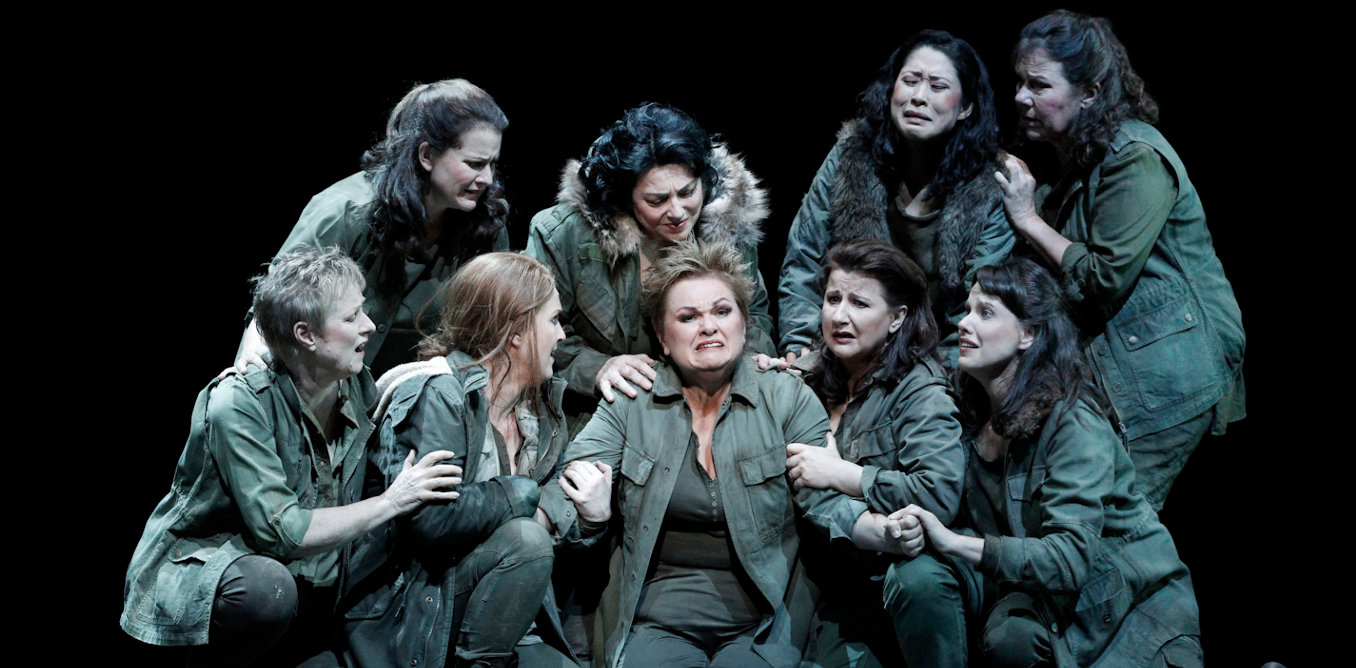
Wagner’s ring cycle works people up – but why?
- Select a language for the TTS:
- UK English Female
- UK English Male
- US English Female
- US English Male
- Australian Female
- Australian Male
- Language selected: (auto detect) - EN
Play all audios:
Opera Australia is currently performing Richard Wagner’s most famous work, Der Ring des Nibelungen – The Ring Cycle – marking the bicentenary of the composer’s birth, at a reported cost of
A$20 million. If that brings out strong emotions in you, you’re not alone. From its first performance in 1876 in the German town of Bayreuth, The Ring Cycle has been controversial. Wagner is
much more than a “mere” composer – he’s a cultural phenomenon, as the long list of events associated with Opera Australia’s sold-out run of The Ring Cycle demonstrates. What is it about
this enormous work that draws passionate reactions from both opera devotees and those who wouldn’t be seen dead in an opera house? WAGNER’S INFLUENCE Wagner himself has always cast a long
shadow in the opera world. The German composer was born on May 22 1813, the same year as his Italian counterpart Guiseppe Verdi and 100 years before the British Benjamin Britten – and
celebrations to mark the Wagner bicentenary are crowding out the other anniversaries. Wagner was a divisive figure virtually from the outset of his career and as a gifted if inconsistent
writer of prose, was able to present his views, including a particularly virulent form of antisemitism, on a variety of topics with force, never skirting controversy. Extremely critical of
the state of opera in Europe in the mid-19th century, he saw The Ring as pointing the way forward. In this he succeeded as no opera composer has done before or since. He completed 13 operas
and we are still grappling with the ideas and artistic practice developed within them. His influence, more than that of any other composer, is still very present in the opera world. Indeed,
his influence extends into many aspects of European and world culture, not the least on an art form not invented in his day – cinema. Wagner’s concealed orchestra at Bayreuth, the German
town where The Ring was first staged, is an important precedent to the use of music in film. HOW THE RING CHANGED OPERA The significance of The Ring lies both in its underlying theoretical
frame and in the successful realisation of the ideas it embodies. Wagner saw contemporary opera as decadent and dying, and, just as the “inventors” of opera did 250 years before, he went
back to Greek drama for his inspiration. The Ring itself is modelled on Greek tragedian Aeschylus’ great tetralogy, The Oresteia, with three main dramas, preceded by a prologue. There had
been several reforming impulses in opera, but Wagner’s innovations were the most comprehensive and influential. The Ring changed the musical language of opera, effectively doing away with
the musical structures such as recitative, aria, duets and larger ensembles that had constituted the dramaturgy of the art form. Wagner turned back to drama and developed music that could
accommodate the complexities but retain the flexibility of dialogue between two or more characters. That staple of opera, the aria, disappears, as do larger ensembles where two or more
characters sing simultaneously. There is virtually no chorus in The Ring. Fundamental in the structure of The Ring was Wagner’s evolution of what became known as _leitmotivs_: recurring
musical phrases that constitute a web of associations as the drama unfolds. Characters, emotional states, even ideas and a wide variety of other elements become associated with particular
musical phrases, rhythms or harmonic progressions, thus creating a dense, constantly evolving, and fully enclosed dramatic world – the orchestra becomes the equivalent of the novelistic
omniscient narrator, but also functions as a form of character stream-of-consciousness. The musical complexity of The Ring is staggering – particularly when one remembers its composition
occurred over a period of more than 25 years, interrupted by Wagner’s writing first one of the longest operas in the repertoire, Die Meistersinger of Nürnburg, and then Tristan und Isolde, a
work which begins to dissolve the whole tonal system developed in Western music over hundreds of years. As with the great tragedies of Shakespeare, The Ring is timeless. It can be
interpreted and staged in a multitude of ways, inevitably revealing fresh insights into the world of the drama itself – and also offering new perspectives on our contemporary world. The Ring
is now often presented as an environmentalist drama suffused with an anti-capitalism sentiment, reflecting Wagner’s interest in Buddhism – he was contemplating an opera on the Buddha, but
did not live to complete it. IS THE RING WORTH DOING? Opera Australia evidently thinks so. Given its scale, The Ring is a hugely expensive undertaking for any opera company, but the
significance of the work, whether one likes it or not, is undeniable. For Opera Australia it will probably mean cuts in other areas, particularly in commissioning new work, which is
regrettable – but the Wagner bicentenary is just too good an opportunity to miss. _Performances of the sold-out Melbourne Ring Cycle take place until December 13, 2013._ FURTHER READING: The
Melbourne Ring Cycle is a once in a century celebration Explainer: Wagner’s Ring Cycle, Der Ring des Nibelungen Should we fund Wagner operas or statues of Kyle Sandilands?